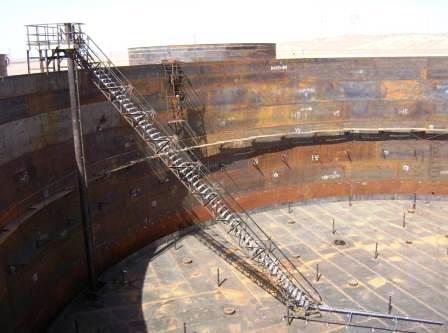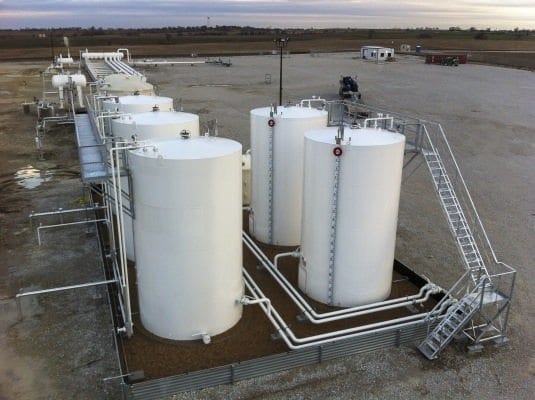Understanding the Importance of Welding Inspection in Quality Control Processes
Welding evaluation is an important part of top quality guarantee in building and construction and manufacturing. It assures that welds abide with well established requirements, which is vital for structural integrity. Numerous assessment techniques, from visual to ultrasonic screening, help recognize flaws early. This positive method not just stops costly repairs yet also boosts safety. Recognizing the subtleties of welding evaluation can expose its broader implications for sector compliance and credibility. API 650 Welding Inspection. What exists under the surface of these practices?
The Function of Welding Evaluation in High Quality Assurance
While welding is a vital process in various industries, its high quality and honesty hinge substantially on reliable inspection techniques. Welding evaluation functions as a guard, guaranteeing that welds satisfy established standards and specifications. This procedure not only recognizes issues but likewise analyzes the overall workmanship, consequently adding to the safety and durability of welded structures. Examinations are indispensable to top quality guarantee, as they aid prevent expensive failures and maintain conformity with sector laws. By using experienced inspectors, organizations can enhance their operational efficiency and support their track records. Additionally, the understandings obtained from assessments can notify constant improvement, leading to much better techniques and training for welders. Eventually, welding inspection serves as a vital link in the high quality assurance chain, ensuring that every joint is reputable and qualified of holding up against the rigors of its designated application. This persistance is crucial for the integrity of framework and the safety of end individuals.
Types of Welding Inspections
Welding examinations incorporate an array of methods made to assess the high quality and honesty of welds. These assessments are crucial in making sure compliance with sector criteria and requirements. Common sorts of welding assessments include aesthetic assessment, which permits instant recognition of surface abnormalities; ultrasonic testing, which uses high-frequency acoustic waves to identify interior problems; and radiographic screening, using X-rays or gamma rays to expose weld integrity under the surface (API 650 Welding Inspection). Additionally, magnetic bit screening is used to determine surface area and near-surface stoppages in ferromagnetic products, while dye penetrant testing provides a technique for revealing surface-breaking defects. Each kind of examination serves a details objective, adding to the general quality guarantee procedure. By utilizing a combination of these strategies, assessors can supply a comprehensive evaluation of welding quality, ultimately guaranteeing the safety and integrity of bonded structures
Usual Flaws Detected in Welding
A variety of common problems can happen during the welding procedure, affecting the honesty and efficiency of welded structures. These flaws include porosity, which involves entraped gas pockets within the weld, deteriorating its stamina. Fractures may likewise form due to quick cooling or inappropriate joint layout, resulting in possible failing under stress and anxiety. Incomplete blend takes place when there wants melting of the base metal, resulting in weak bonds. click this One more flaw, undercutting, entails the removal of base steel along the weld side, developing a significant structural weak point. Furthermore, extreme spatter can affect the appearance and demand additional cleansing or repair service. Ultimately, imbalance can result in irregular weld grains, jeopardizing the total high quality. Recognizing these issues early with appropriate inspection techniques is vital to guarantee the integrity and safety and security of welded components, ultimately guarding the efficiency of the entire framework.

Advantages of Normal Welding Assessments
Routine examinations play a considerable role in keeping the high quality and safety of welded frameworks, specifically in light of the typical defects previously outlined. These inspections offer a chance to identify and correct problems prior to they intensify right into serious problems, making sure architectural stability. By discovering defects early, companies can decrease repair work expenses and avoid prospective project delays.
Furthermore, normal welding evaluations improve conformity with sector criteria and regulations, fostering depend on amongst stakeholders. This adherence not just shields the company's credibility however likewise adds to enhanced security for workers and the general public.
Furthermore, constant assessments assist in much better training and ability growth for welders, as responses from inspections can guide improvements. Eventually, the benefits of regular welding inspections extend past instant quality control, promoting lasting functional effectiveness and dependability in welded frameworks.
Finest Practices for Effective Welding Assessment
Carrying out finest practices in welding examination is vital for guaranteeing the highest possible requirements of top quality and security. Assessors have to be effectively educated and accredited, having an extensive understanding of welding strategies and products. Using innovative evaluation innovations, such as ultrasonic testing and radiography, boosts the discovery of issues that might not be noticeable to the naked eye. Developing a clear evaluation strategy, detailing the requirements and regularity of evaluations, warranties consistency and thoroughness.

Recording all searchings for diligently is vital for traceability and accountability. Routine calibration of evaluation devices guarantees precision, while preserving a orderly and tidy office minimizes the danger of contamination. In addition, cultivating open interaction among staff member facilitates the sharing of insights and advertises a check these guys out society of top quality. By sticking to these finest methods, companies can significantly enhance their welding quality control processes, inevitably bring about more secure and extra reliable items.

Frequently Asked Inquiries
What Credentials Are Required for a Welding Examiner?
A welding examiner typically calls for certification from identified organizations, such as the American Welding Culture (AWS) or the International Institute of Welding (IIW), along with appropriate experience and expertise in welding processes and quality requirements.
Just How Typically Should Welding Inspections Be Executed?
Welding evaluations must be executed routinely, commonly at numerous project stages, including prior to, throughout, and after welding processes - API 650 Welding Inspection. The frequency typically depends upon task requirements, governing needs, and the intricacy visit of the welds entailed
What Are the Costs Connected With Welding Assessments?
The prices related to welding evaluations vary widely, typically ranging from a few hundred to a number of thousand bucks, relying on variables like inspection type, job size, and location, impacting overall project budgets and timelines.
Can Welding Inspections Be Conducted From Another Location?
Yes, welding examinations can be performed remotely using innovative innovations such as drones, electronic cameras, and ultrasonic screening. These techniques allow assessors to assess weld honesty without being physically existing, boosting effectiveness and safety in different environments.
Just How Do Assessment Results Influence Job Timelines?
Inspection results can substantially impact task timelines by determining issues early, causing necessary rework or changes. Delays might take place if inspections expose issues needing resolution, ultimately impacting total project conclusion and budget adherence.
Welding assessments incorporate a range of approaches designed to assess the top quality and integrity of welds. Typical kinds of welding inspections include aesthetic inspection, which enables for instant recognition of surface abnormalities; ultrasonic screening, which makes use of high-frequency sound waves to find inner flaws; and radiographic testing, utilizing X-rays or gamma rays to disclose weld honesty beneath the surface. Constant assessments promote far better training and skill development for welders, as comments from assessments can lead renovations. Implementing best techniques in welding examination is crucial for guaranteeing the highest standards of quality and security. Welding evaluations should be done routinely, commonly at various job stages, consisting of prior to, during, and after welding procedures.